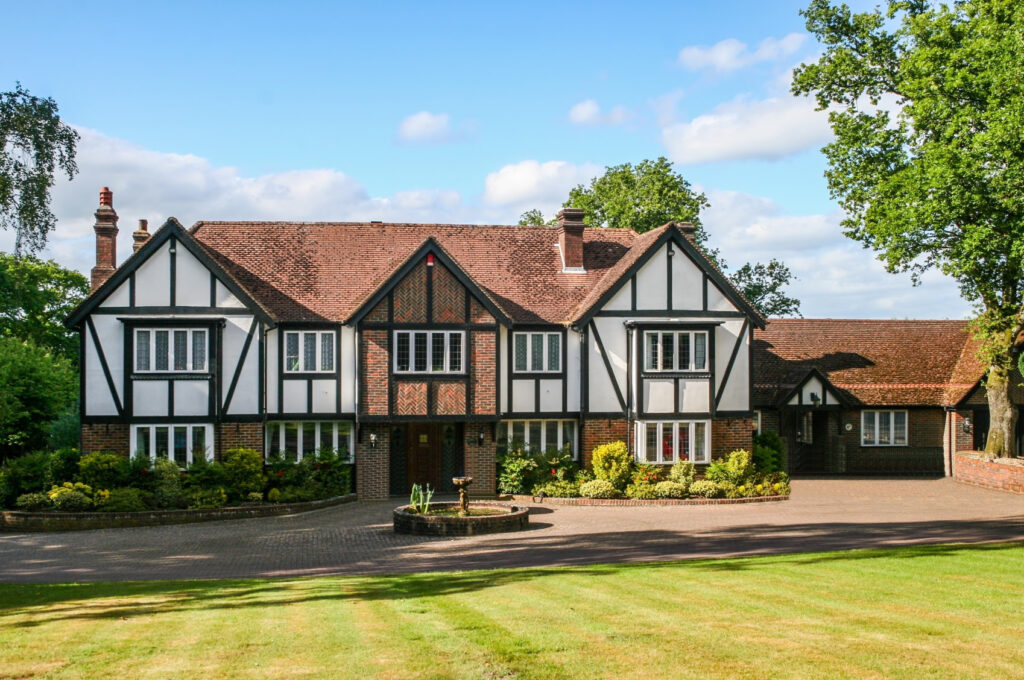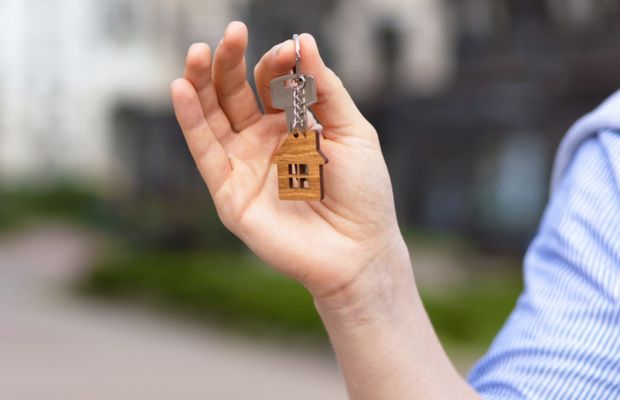Period properties remain hugely popular with home buyers in the UK.
But there are several important pros and cons you should consider before committing to purchasing one.
In this guide, we’ll tell you everything you need to know about different types of period property and reveal those all-important pros and cons…
What is a period property?
The term ‘period property’ generally refers to homes that were built before the First World War.
Some of the oldest surviving period homes in the UK date from the 1400s, with architectural styles evolving right through from that Tudor period to the early 1900s and Edwardian-style property.
What age is period property?
Most period properties in the UK date from the late 1400s to the early 1900s, spanning several eras of house building.
As such, there are certain designs and styles to look out for depending on the age of the property…
1. Tudor property
Tudor homes are some of the oldest surviving residential properties in the UK and date from the late 1400s to the early 1600s.
Tudor properties are set apart from other period homes because of their classic black and white woodwork, steep pitched roofs and jetties that overhang the street below.
In the 19th century, Tudor styling came back into fashion and the UK is home to many ‘mock Tudor’ homes.
The main features of Tudor properties include:
- Tall and narrow doors and windows
- Wooden floors
- Black wooden cladding and white paintwork
- Decorative symbols of the era, including the Tudor rose
- Top-floor jetties that stick out and overhang the street
2. Georgian property
Georgian properties are among the most popular period homes in the UK and have survived in great numbers.
Georgian homes date from the early 1700s to the early 1800s and include the Regency period of 1811 to 1820 when the Prince of Wales, George, ran the country as Prince Regent.
Georgian homes are renowned for their symmetry and elegance and often span three or four storeys in decorative terraces.
Servants often lived on the top floors, so these usually feature lower ceilings and fewer decorative features than lower floors.
The main features of Georgian homes include:
- Sash windows
- Symmetrical interiors and exteriors and balanced layouts
- White or cream rendered exteriors, often with exposed brickwork above the ground floor in early Georgian properties
- Ornate fireplaces, cornice, and ceiling roses
- High ceilings and skirting on lower floors
- Wooden wall panelling
3. Victorian property
The Victorian period ran from 1830 to 1901 during the reign of Queen Victoria and included the Industrial Revolution.
This made housing more accessible and so Victorian homes are often less grand than the Georgian properties that came before them.
Victorian homes often come in long rows of terraces on narrow streets and although they usually feature high ceilings and decorative interior designs, they feel more cramped than Georgian properties due to narrow hallways and a thin footprint.
The main features of Victorian properties include:
- High pitched roofs and coloured brickwork
- Ornate gable trims
- Narrow, tiled hallways and exterior paths
- Brick porches
- Stained glass and bay windows
- Ornate fireplaces in every room
- Wooden wall panelling
4. Edwardian property
The Edwardian period was short, but hugely influential when it came to homes.
Although the period only lasted 13 years between 1901 and 1914, Edwardian homes took all the great aspects of Victorian properties and made them even better.
Properties were built in the suburbs due to the desire for more space at the time, while Edwardian homes are more squat than Victorian properties, so feel much more spacious.
Many sit back from the street, with small front gardens, while living rooms often feature windows at both ends.
- Red brickwork and mock Tudor wood cladding on gables
- Wooden-framed porches
- Wide hallways
- Parquet wood flooring
- A wide footprint and decorative features like picture rails and cornice
The pros and cons of period property
Period properties have stood the test of time, not to mention two World Wars and the renovation boom of the 1950s, 1960s and 1970s.
However, simply because of their age, there are some cons to buying a period home as well as all the benefits that come with doing so…
| Period property pros | Period property cons |
| Great character and period features | Poor energy efficiency |
| Spacious rooms and gardens | Issues with damp |
| Scope to add value | High maintenance |
What to look for when buying an old house
When buying an older property, you should look out for:
1. Poor renovation work
In the 1950s and 1960s, period homes were considered old fashioned.
So, buyers often ripped out original features like fireplaces and decorative cornice or undertook other unsympathetic renovation work.
Reinstating those features can be costly, so when viewing period properties to buy, look out for poor mid-century renovation work, as well as hidden gems that may remain, such as boxed in Victorian fireplaces.
2. Damp problems
Damp-proof courses only became a legal house-building requirement in the late 1800s, so properties build before this time can sometimes suffer with damp problems.
Keep an eye out for signs of serious damp when viewing period homes, including:
- Brown marks or discolouration on walls
- Signs of mould on walls and ceilings
- Bubbling plaster or wallpaper that is peeling away
Also, try to find out as much information as possible from the agent about any damp-proofing work that has already been carried out.
3. Poor energy efficiency
Period homes can be among the worst for energy efficiency, simply because building materials like insulation weren’t as good as they are today.
Original features like sash windows can look incredible, but may also allow lots of heat to escape, while Victorian homes often have no roof insulation.
When viewing period homes, take a look at the Energy Performance Certificate (EPC), which will tell you more about how energy efficient the property is and indicate what work has already been carried out.
4. Odd layouts
Period homes often come with layouts that don’t work for modern living.
For example, it’s common to find period properties with downstairs bathrooms that can only be accessed via the kitchen.
When on a viewing, consider how much work and expense would be required to amend the property’s layout.
5. Listed properties
Many period homes are Grade II listed to protect them from development.
This can limit what you’re able to do in terms of renovations.
You should also look out for period properties in Conservation Areas, as these may fall under Article 4 directions that limit development work that can be done without planning permission.
Are period properties more expensive?
New-build homes generally cost more than period properties because of the premium that comes with buying a home that is yet to be lived in.
However, well-looked-after period properties can be worth more, as there are fewer of them, increasing their appeal and what buyers are prepared to pay.




